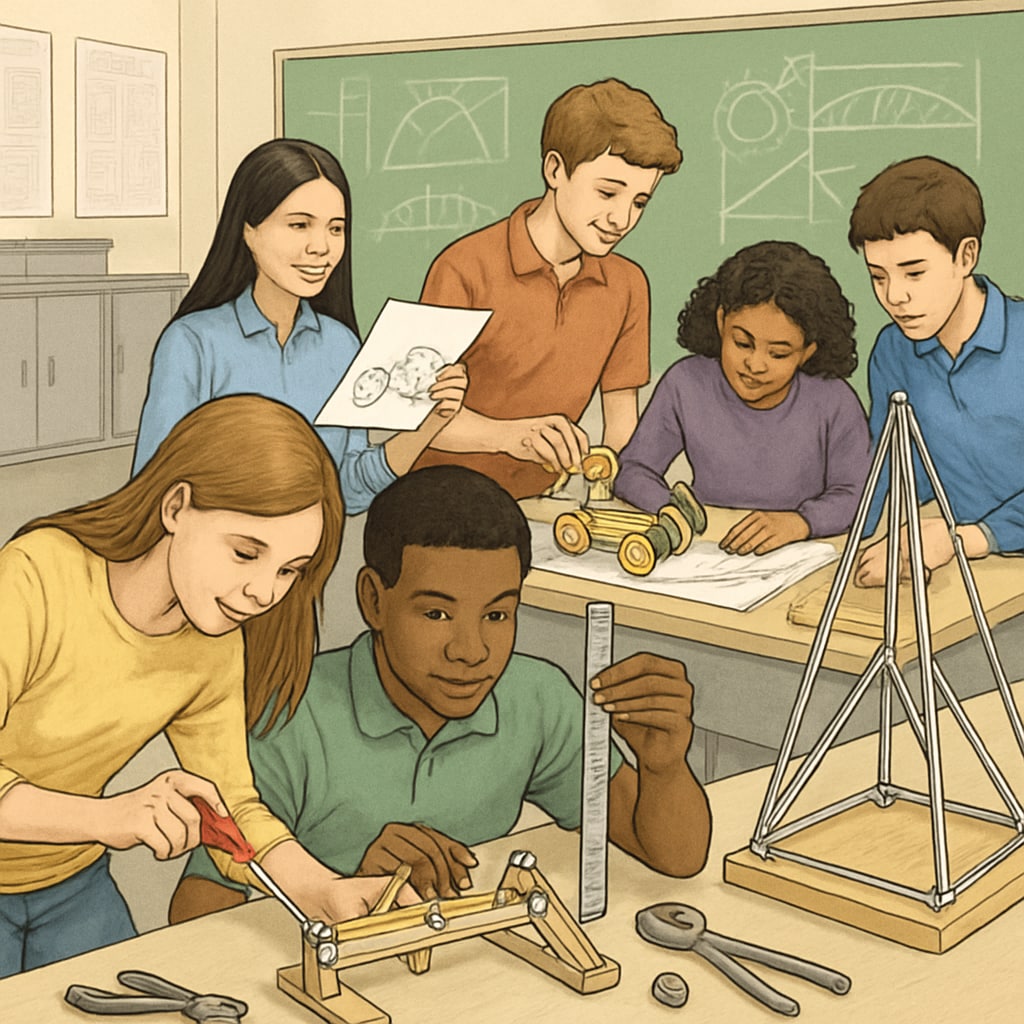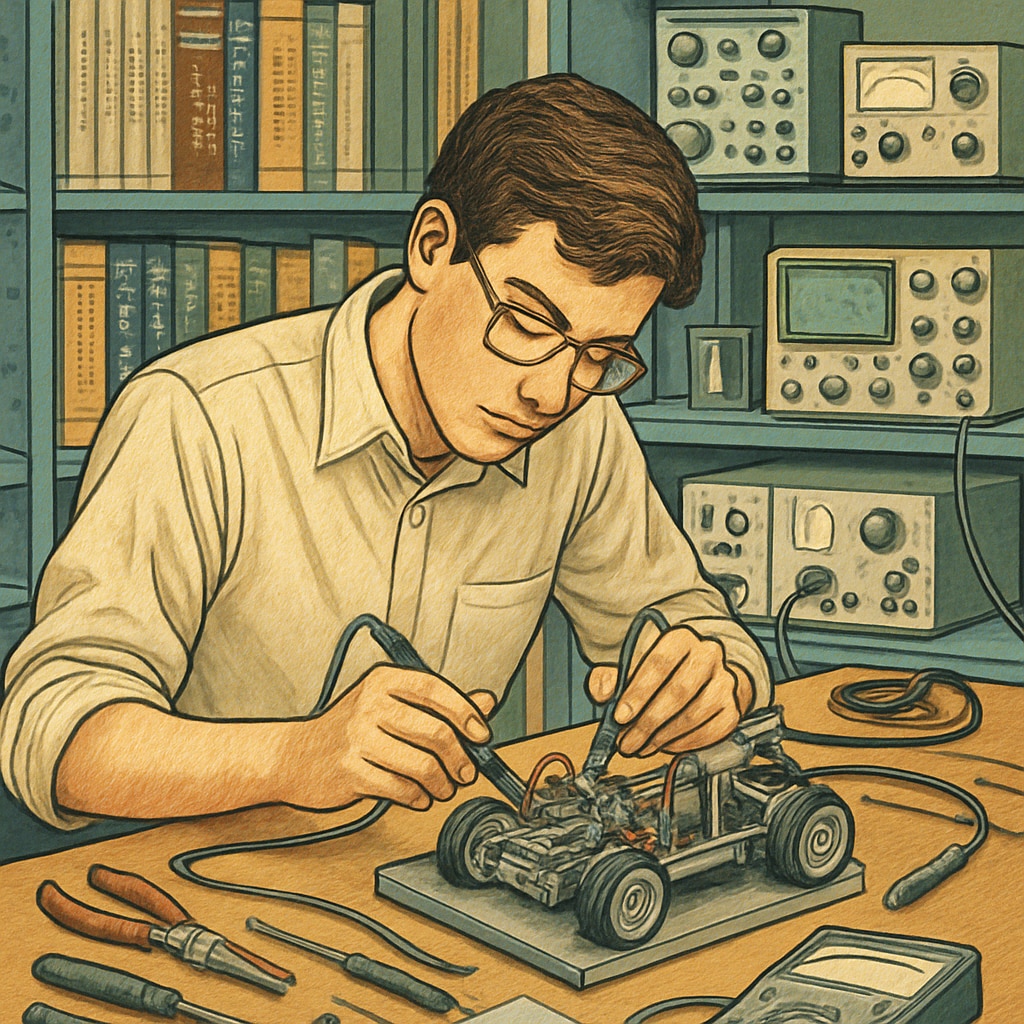Deciding on the right academic path is one of the most significant challenges students face, and this is particularly true for those pursuing engineering design education. The foundational skills gained during the K12 years play a critical role in shaping their future choices—whether that involves selecting a specialized degree, pursuing advanced education like a master’s program, or navigating career opportunities. By fostering engineering thinking and decision-making skills during the K12 stage, educators can equip students to make informed and strategic choices that align with their individual aspirations and the demands of the job market.

Why Engineering Design Matters in K12 Education
Engineering design is more than just technical skills; it’s about critical thinking, problem-solving, and creativity. Introducing engineering concepts during the K12 stage helps students develop a mindset that is essential for success in STEM (Science, Technology, Engineering, Mathematics) fields. For example, understanding how to approach real-world problems systematically can prepare students for challenges they will face in advanced academic settings and their future careers.
Moreover, early exposure to engineering design encourages students to explore various subfields, such as mechanical, electrical, or software engineering. As a result, they gain clarity about their interests and strengths, enabling them to make better decisions about degree programs and career paths.
- Encourages hands-on experimentation and learning-by-doing.
- Builds problem-solving abilities applicable across disciplines.
- Fosters collaboration, teamwork, and communication skills.
From K12 to Advanced Degrees: Bridging the Gap
The transition from K12 education to higher education is a pivotal moment in a student’s journey. For those considering engineering design as a career, selecting the right undergraduate and graduate programs is essential. A strong K12 foundation in engineering principles can help students identify whether they should pursue specialized bachelor’s degrees or aim higher with a master’s degree for greater career opportunities.
For example, a bachelor’s degree in engineering provides students with technical expertise and prepares them for entry-level roles in industries such as manufacturing, construction, or technology. However, pursuing a master’s degree can open doors to leadership positions, advanced research, and higher earning potential. According to Britannica, engineers with advanced degrees are often sought after for their in-depth knowledge and ability to tackle complex challenges.

Career Development in Engineering Design: Aligning Skills with Opportunities
Choosing the right degree is only part of the equation; aligning educational achievements with career goals is equally important. Engineering design careers are diverse, ranging from product development to environmental engineering. Understanding the skills and qualifications required for specific roles helps students tailor their education to meet industry demands.
For instance, students passionate about innovation may thrive in roles such as design engineers, where creativity and technical expertise are highly valued. On the other hand, those interested in leadership could pursue project management positions, which often require both engineering knowledge and business acumen. The U.S. Bureau of Labor Statistics highlights that engineering managers earn significantly higher salaries than their counterparts in technical roles, making advanced education and strategic career planning crucial.
- Explore industry trends to identify high-demand roles.
- Match personal interests with career opportunities.
- Invest in continuous learning through certifications and workshops.
Conclusion: Empowering Students Through K12 Engineering Design Education
In conclusion, K12 engineering design education serves as the foundation for lifelong learning and career success. By equipping students with critical thinking, creativity, and decision-making skills, educators can help them navigate the complexities of degree selection and career planning. Whether aiming for a bachelor’s degree, pursuing a master’s program, or entering the workforce directly, students who have developed a strong engineering mindset during their formative years are better prepared to make informed choices that align with their ambitions.
As a result, investing in comprehensive K12 engineering design curricula is not just about academic preparation; it’s about building the next generation of innovators and problem solvers who will shape the future of industries worldwide.
Readability guidance: The article uses short paragraphs and lists to break down complex concepts into digestible pieces. Active voice is prioritized to maintain clarity, and transitions like “for example” and “therefore” ensure smooth flow between ideas. Images are placed strategically to enhance visual engagement.


